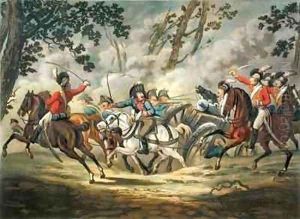Gessner, Conrad Paintings
Conrad Gessner was a Swiss physician, naturalist, bibliographer, and philologist, born on March 26, 1516, in Zürich, Switzerland, and died on December 13, 1565, in Zürich. Though not primarily known as an artist in the traditional sense, Gessner's extensive work in the fields of natural history and science had a profound impact on the visual representation of plants and animals during the Renaissance and beyond. His most famous work, 'Historiae animalium' (History of Animals), published in multiple volumes between 1551 and 1558, is considered the beginning of modern zoology. Gessner's meticulous descriptions accompanied by detailed illustrations provided one of the first systematic approaches to classifying the natural world.
Gessner's contributions to the natural sciences were monumental, bridging the gap between ancient and medieval scholarship and the emerging modern scientific approach. His work was based on both firsthand observations and the compilation of classical and contemporary sources, making him a pioneer in the field of bibliographic methodology. Gessner also made significant contributions to botany, with his work 'Historia plantarum' remaining unfinished at his death but laying the groundwork for future botanical studies and classifications.
Beyond his scientific endeavors, Gessner was a prolific writer and compiler of knowledge. His 'Bibliotheca universalis' (1545), an annotated bibliography of all the authors who had written in Greek, Latin, or Hebrew up to that time, was an ambitious project that sought to catalog the entirety of known literature, making Gessner a forerunner in the field of bibliographic science. Despite not being an artist in the conventional sense, his detailed illustrations in his scientific works have been highly influential in both art and science, bridging the two disciplines through his meticulous and comprehensive approach to nature study.
Gessner's life and work reflect the Renaissance's spirit of inquiry and the quest for understanding the natural world. His interdisciplinary approach, combining science, art, and literature, underscores the interconnectedness of knowledge and the importance of detailed observation and documentation. Gessner's legacy is felt in the fields of zoology, botany, bibliographics, and beyond, marking him as a key figure in the history of science and a contributor to the visual arts through his detailed illustrations.


